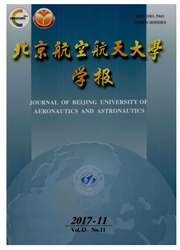

 中文摘要:
中文摘要:
金属塑性成形后的应变特征影响零件的力学性能和使用寿命。电磁成形技术能提高金属的成形性,有助于克服铝合金室温成形性低的缺点,因而得到重视。本文以2024-T3航空铝合金板为研究对象,开展了电磁V弯成形和传统机械V弯成形的实验及数值模拟,研究了2种成形方法对弯曲成形试件V形弯曲圆角位置沿试件长度方向的应变特征的影响。数值模型表明,电磁V弯试件弯曲圆角处的拉应变峰值低于机械V弯试件;电磁V弯实验件的拉应变峰值比机械V弯试件低13.9%。同时,与机械V弯试件相比,电磁V弯试件有更大区域的金属材料参与了弯曲变形。
 英文摘要:
英文摘要:
The mechanical properties and service life of parts are influenced by the strain characteristics after metal forming process which causes plastic deformation. Meanwhile,the electromagnetic forming( EMF)gets more attention for the advantage that it can help to overcome the drawback of low formability of aluminum alloys at room temperature by improving the formability. Therefore,the aviation aluminum alloy plate of2024-T3 was used as the study object. And,the experiments and numerical simulations of V-bending process by both EMF and conventional mechanical method were carried out. The influence of two forming methods on the strain characteristics at the V-shaped corner which is along the longitudinal direction of the specimen was studied. The results show that the tensile strain at the outside of the V-shaped corner of the numerical virtual part formed by EMF is smaller than that formed by mechanical method,and the peak value of tensile strain of actual part formed by EMF is lower by 13. 9% as well. In addition,compared with mechanical method,a larger proportion of metal sheet formed by EMF gets involved in the bending deformation.
 同期刊论文项目
同期刊论文项目
 同项目期刊论文
同项目期刊论文
 期刊信息
期刊信息
